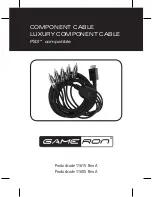
Parametrization and commissioning
BK9055 and BK9105
21
Version: 2.0.0
4
Parametrization and commissioning
4.1
Start-up behaviour of the Bus Coupler
Immediately after being switched on, the Bus Coupler checks, in the course of a self-test, all the functions of
its components and the communication on the K-bus/E-bus. The red I/O LED blinks while this is happening.
After completion of the self-test, the Bus Coupler starts to test the attached Bus Terminals (the "Bus
Terminal Test"), and reads in the configuration. The Bus Terminal configuration is used to generate an
internal structure list, which is not accessible from outside. In case of an error, the Bus Coupler enters the
Stop
state. Once the start-up has completed without error, the Bus Coupler enters the
fieldbus start
state.
Fig. 5: Start-up behaviour of the Bus Coupler
The Bus Coupler can be made to enter the normal operating state by switching it on again once the fault has
been rectified.
4.2
Parameterization of the Bus Coupler using DIP
Switches*
*) Firmware version B5 or higher
The following parameterizations can be carried out without using configuration software, with the aid of the
DIP switches and the end terminal (KL9010).
This parameterization mode is only active if only one end terminal (KL9010) is inserted. Otherwise, the
normal settings apply.
Restoring the manufacturer's settings
• Switch off the Bus Coupler, and plug in just the end terminal (KL9010).
• Set all the DIP switches to ON, and switch the Bus Coupler on again.
• Once the default parameters have successfully been set, the
Error
LED lights, and the
I/O Run
and
I/O
Error
LEDs flash alternately.
• You can then switch the Bus Coupler off, connect the Bus Terminals, and continue as usual.
Setting the Ethernet parameters
• Switch off the Bus Coupler, and plug in just the end terminal (KL9010).
• Set all the DIP switches to OFF, and switch the Bus Coupler on again.
• The
I/O
RUN and
I/O Error
LEDs light steadily.
• Make the desired setting in accordance with the following table.
















































